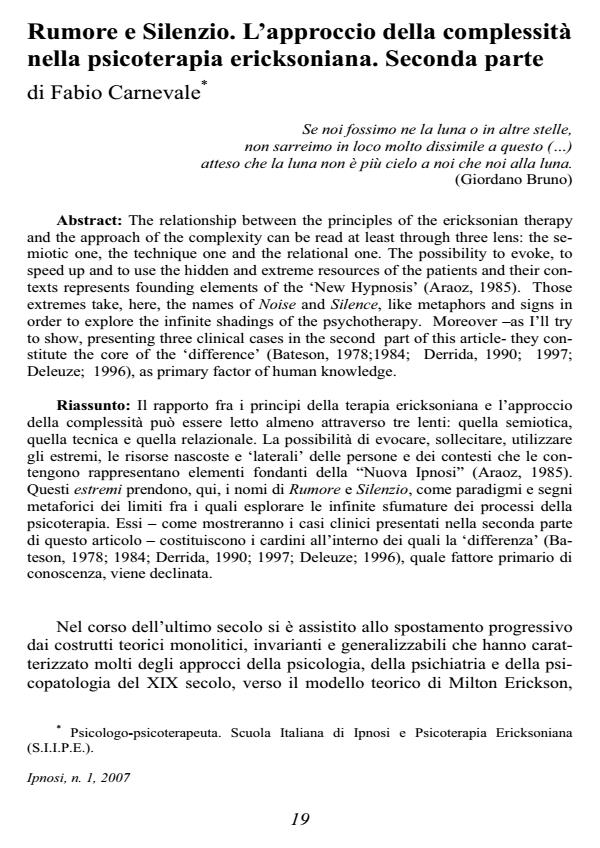Rumore e silenzio. L'approccio della complessità nella psicoterapia ericksoniana. Seconda parte
Titolo Rivista IPNOSI
Autori/Curatori Fabio Carnevale
Anno di pubblicazione 2007 Fascicolo 2007/1
Lingua Italiano Numero pagine 16 P. 19-34 Dimensione file 125 KB
DOI
Il DOI è il codice a barre della proprietà intellettuale: per saperne di più
clicca qui
Qui sotto puoi vedere in anteprima la prima pagina di questo articolo.
Se questo articolo ti interessa, lo puoi acquistare (e scaricare in formato pdf) seguendo le facili indicazioni per acquistare il download credit. Acquista Download Credits per scaricare questo Articolo in formato PDF

FrancoAngeli è membro della Publishers International Linking Association, Inc (PILA)associazione indipendente e non profit per facilitare (attraverso i servizi tecnologici implementati da CrossRef.org) l’accesso degli studiosi ai contenuti digitali nelle pubblicazioni professionali e scientifiche
The relationship between the principles of the ericksonian therapy and the approach of the complexity can be read at least through three lens: the semiotic one, the technique one and the relational one. The possibility to evoke, to speed up and to use the hidden and extreme resources of the patients and their contexts represents founding elements of the ‘New Hypnosis’ (Araoz, 1985). Those extremes take, here, the names of Noise and Silence, like metaphors and signs in order to explore the infinite shadings of the psychotherapy. Moreover as I’ll try to show, presenting three clinical cases in the second part of this article- they constitute the core of the difference (Bateson, 1978;1984; Derrida, 1990; 1997; Deleuze; 1996), as primary factor of human knowledge.
Fabio Carnevale, Rumore e silenzio. L'approccio della complessità nella psicoterapia ericksoniana. Seconda parte in "IPNOSI" 1/2007, pp 19-34, DOI: